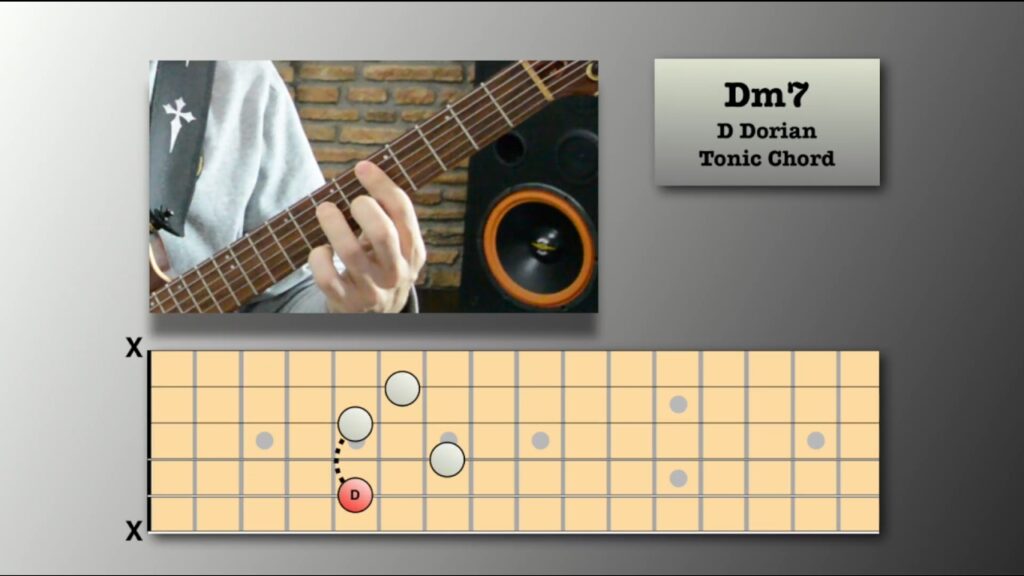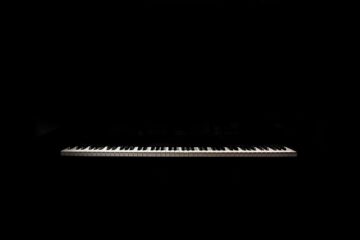Most chords you’ll encounter are built on a foundation of three notes, called triads. These are your bread and butter, and understanding them is key to everything else. The main types of triads you’ll run into are:
Major Chords: The Happy Sounds
Think of a major chord as sounding bright, happy, or triumphant. They’re super common and form the basis of tons of popular songs.
- How they’re built: A major chord uses the 1st, 3rd, and 5th notes of the major scale. Another way to think about it is: Root note, plus a major third (4 half steps up), plus a perfect fifth (7 half steps up from the root, or 3 half steps up from the third).
- Example: A C major chord consists of the notes C, E, and G. Hear that open, cheerful sound?
Minor Chords: The Melancholy Tones
If major chords are happy, minor chords often sound sad, serious, or even a little mysterious. They add a different kind of emotional depth to music.
- How they’re built: A minor chord also uses the 1st, 3rd, and 5th notes of the major scale, but with a twist! The third note is lowered by a half step (one key to the left). So it’s: Root note, plus a minor third (3 half steps up), plus a perfect fifth (7 half steps up from the root, or 4 half steps up from the minor third).
- Example: A C minor chord has the notes C, Eb (that’s E flat, one half step lower than E), and G. Notice that darker, more somber quality?
Diminished Chords: Adding Tension
Diminished chords have a more tense, unstable, and sometimes even unsettling sound. They’re not used as often as major or minor chords but can add a lot of flavor and create a feeling of wanting to resolve to another chord.
- How they’re built: Think of a minor chord that’s been “shrunk” a bit more. You take the 1st, flat 3rd, and then you also lower the 5th by a half step. So: Root note, plus a minor third (3 half steps up), plus a diminished fifth (6 half steps up from the root).
- Example: A C diminished chord is made up of C, Eb, and Gb (G flat, one half step lower than G).

Augmented Chords: A Wider Sound
Augmented chords have a kind of stretched, almost dreamy or unresolved quality. They’re created by making a major chord “wider.”
- How they’re built: You start with a major chord (1st, 3rd, 5th) and then you raise the 5th by a half step. So: Root note, plus a major third (4 half steps up), plus an augmented fifth (8 half steps up from the root).
- Example: A C augmented chord consists of C, E, and G# (G sharp, one half step higher than G).
Adding More Layers: Seventh Chords
Once you’re comfortable with triads, you can start adding another note to create richer, more complex sounds called seventh chords. These are very common in genres like jazz, blues, and even pop. They add a sense of sophistication and harmonic interest.
A seventh chord is basically a triad with an added note that is seven steps away from the root note in the scale (hence the name!). But there are different types of sevenths you can add, which leads to different types of seventh chords:
Major Seventh Chords (maj7)
These have a lush, smooth, and often jazzy sound.
- How they’re built: Major triad (1-3-5) plus a major seventh (the 7th note of the major scale).
- Example: Cmaj7 is C, E, G, and B.
Dominant Seventh Chords (7)
These are super common, especially in blues and as a way to create tension that wants to resolve back to the root chord. They have a bluesy, sometimes restless feel.
- How they’re built: Major triad (1-3-5) plus a minor seventh (one half step lower than the major seventh).
- Example: C7 is C, E, G, and Bb (B flat).
Minor Seventh Chords (m7)
These have a mellow, often slightly melancholic or contemplative sound, similar to a minor triad but with added depth.
- How they’re built: Minor triad (1-b3-5) plus a minor seventh.
- Example: Cm7 is C, Eb, G, and Bb.

Diminished Seventh Chords (dim7)
These are even more tense and dissonant than regular diminished triads. They have a very distinct, often dramatic sound.
- How they’re built: Diminished triad (1-b3-b5) plus a diminished seventh (which is a whole step below the root in a major scale… it gets a little complicated here!).
- Example: Cdim7 is C, Eb, Gb, and Bbb (B double flat, which sounds the same as A natural).
Half-Diminished Seventh Chords (m7b5)
These are sometimes called minor seven flat five chords. They have a unique, somewhat unresolved and often moody sound.
- How they’re built: Minor triad (1-b3-5) with a flatted fifth (like a diminished triad) and a minor seventh.
- Example: Cm7b5 is C, Eb, Gb, and Bb.
Beyond the Basics: Other Interesting Chords
While triads and seventh chords are the most common, there are other types of chords that add even more color and complexity:
- Suspended Chords (sus2 and sus4): These chords replace the third with either the second (sus2) or the fourth (sus4) note of the scale, creating an open, unresolved sound. For example, Csus4 is C-F-G.
- Added Note Chords (add9, add11, etc.): These chords simply add an extra note to a triad, like the 9th or 11th of the scale, without adding a seventh. For example, Cadd9 is C-E-G-D (the D is the 9th).
- Slash Chords: These indicate a chord played with a different bass note than the root. For example, C/E means a C major chord with an E in the bass.
Don’t Get Overwhelmed!
It might seem like a lot of information, but the best way to learn chords is to start with the basics – major and minor triads. Once you can recognize and play those, you can gradually explore the others. Experiment with how each chord sounds and how they make you feel. That’s the real magic of music!
So, go ahead, sit down at the piano and start exploring these different families of chords. Your ears (and your future songs!) will thank you!



0 Comments